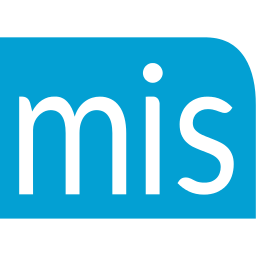In today’s economy, where prospects are quick with the brush off, you’ve got to find a way to instantly establish rapport, differentiate yourself from all the other sales reps who are calling them, and build trust and credibility for yourself and your company.
While this sounds like a tall order, it can be even harder when you realize that you’ve got to do all this in the first 30 seconds of the phone call!
Here are three techniques you can begin using today to create ease, build rapport and get the person on the other end of the phone to trust you.
1) Resist the urge to cut your prospect off – especially if they are giving you an initial negative response.
Your prospects get a lot of calls and they are good at, and quick to, blow sales reps off. The problem that 80% of your competition is making is that they cut their prospects off and start combating their prospect’s initial blow off response.
The Better Way: Hear your prospect out and be prepared to agree with them by having a scripted response that deals with their initial resistance. Something like:
“ I understand ________, and I’m not calling to sell you anything today. Rather, I’m here to see if there might be a fit between our two companies and if there is, then to offer you an additional resource you might be able to use later on. Let me ask you…”
Hearing your prospect out, agreeing with them, and then offering a non-threatening value statement instantly allows your prospect to be heard, and distinguishes you from the other sales reps who are jumping all over them.
2) Empathize with your prospect by asking how they are dealing with the economy.
Hey let’s face it, we’re all in the same boat regarding the economy, and if you’re feeling the strain, so is your prospect. Rather than try to bulldoze them, why not empathize with them and try to see things from their perspective? Try:
“I completely understand, how are you dealing with the economy these days?” or
“I’m sure it’s rough for you as well, tell me, how are you making things work in this business climate?” or
“I’m with you. How long have you been working in that position? What changes have you had to make to survive in today’s economy?”
Getting your prospect talking by showing genuine interest will go a long way to building trust and credibility for yourself and your company.
3) Be prepared to be positive.
At the end of a phone call – no matter how short – somebody’s attitude has been transferred to the other person. Unfortunately, the prospect’s negative doom and gloom attitude usually infects the bottom 80%. That’s why it’s so hard for them to pick up the phone.
The Top 20%, on the other hand, understand this, are prepared for their prospect’s negative responses and attitudes, and make it their goal to enter the call on a positive note and to transfer their positive, enthusiastic attitude to their prospect by the end of the call.
They do this by being prepared with positive statements they use in response to the negativity they get all day long. Things like:
Prospect: “We’re not spending any money on that right now.”
Top 20%: “Some companies aren’t, but there are many who recognize that this is the ideal time to capture market share and position themselves for the economic upturn that is coming. Let me ask you this – if you saw a way to earn an immediate ROI on just a small investment, where could you clear up $_______ to take advantage of it?” or
“Prospect: “In today’s economy I’m just lucky to have a job!”
Top 20%: “I know what you mean, and if you want to keep that job, now’s the time to be proactive and show some real initiative. Here’s what other managers I’m speaking with are doing to strengthen their position and even build value in their services…..”
By being prepared with positive statements to the constant negativity you’re getting all day long, you’ll not only stay positive yourself, but also spread that vibe throughout the economy. And that’s the real economic stimulus plan this economy needs.
These three techniques will work for you if you begin using them. The bottom line is that if you don’t adapt what you’re doing and how you’re doing it, then you will continue to get blow off the phone and you’ll struggle to make sales.
If you do begin using these techniques, then you’ll position yourself to become a Top 20% performer. Try them for yourself and watch your confidence – and sales – grow.
Did you enjoy this article? Please let me know your thoughts in the comments section below.
